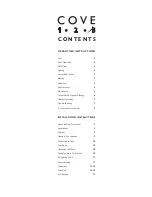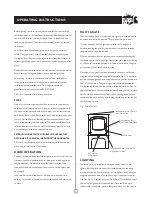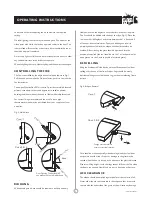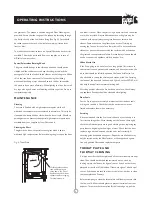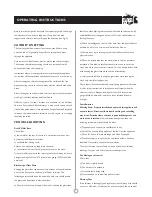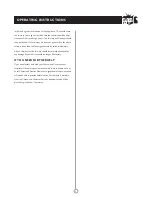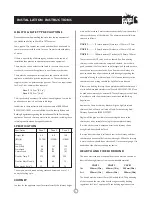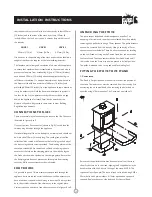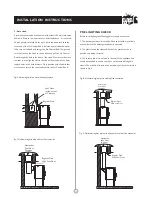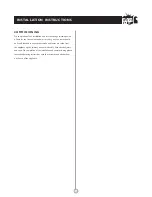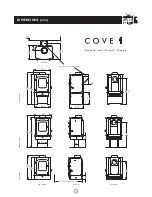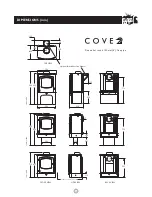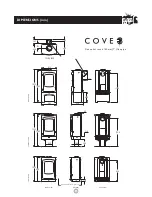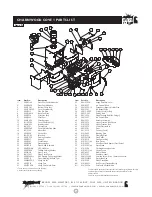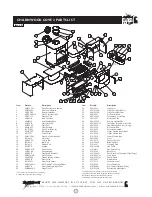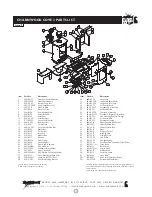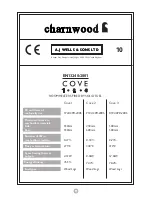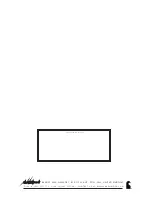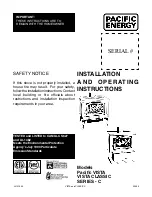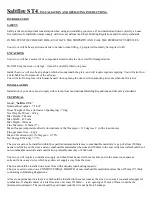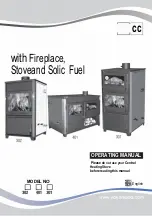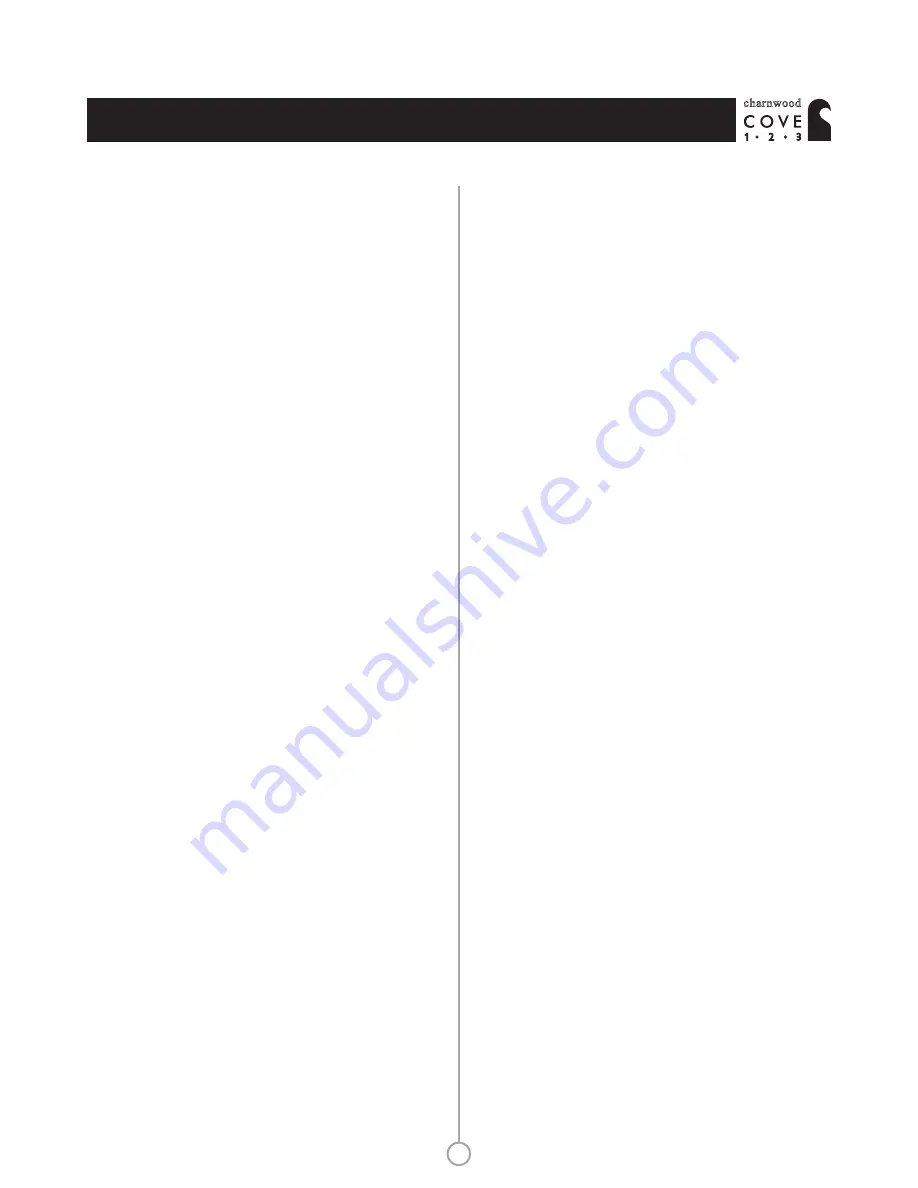
plate forwards to align the slots with the support pegs and then hinge
the plate down from its back supports. Lift up from the back
supports and rotate to remove through the doorway (see Fig. 4).
The chimney should be swept at least once a year. Where a top
outlet is used it will generally be possible to sweep the chimney
through the appliance.
First remove the front firebar, side fire plates, and the throat plate.
Then sweep the chimney ensuring that soot is removed from all
horizontal surfaces after sweeping.
In situations where it is not possible to sweep through the appliance
the installer will have provided alternative means, such as a soot door.
After sweeping the chimney the appliance flue outlet and the flue
pipe connecting the stove to the chimney must be cleaned with a flue
brush.
After clearing any soot from within the stove, replace the throat plate
(see
4), the
front firebar.
Check that:
a) the air inlet at the rear of the stove is not obstructed in any way,
b) chimneys and flueways are clear,
c) a suitable fuel is being used,
d) there is an adequate air supply into the room,
e) an extractor fan is not fitted in the same room as the stove.
f) there is sufficient draw in the chimney (once the chimney is warm a
draught reading of at least 0.10 inches water gauge (25Pa) should be
obtained).
Keeping the glass clean requires a certain amount of experimentation
due to the differences in the draw of different chimneys. The
following points should be noted and with a little care should enable
the glass to be kept clean in most situations:
a) The airwash relies on a supply of heated air to keep the glass clean,
CHIMNEY SWEEPING
Fig.
side fireplates, and
Different types of sweep's brushes are available to suit different
flueways. For standard brick chimneys a wire centre sweep's brush
fitted with a guide wheel is recommended. For prefabricated insulated
chimneys the manufacturers instructions with regard to sweeping
should be consulted.
TROUBLE SHOOTING
Fire Will Not Burn
Blackening of Door Glass
therefore, when lighting the stove allow the fire bed to become well
established before closing the air control. This also applies when re-
fuelling the stove.
b) When re-fuelling keep the fuel as far back from the front firebar as
possible, do not try to fit too much fuel into the firebox.
c) Wet wood or logs overhanging the front firebars will cause the
glass to blacken.
d) There is a bypass slide that can be adjusted to suit the particular
installation. This allows a small amount of airwash air to enter the
stove even when the air control is closed. This can be adjusted to help
with keeping the glass clean when the fire is slumbering.
It is always more difficult to keep the glass clean when running the
stove very slowly for long periods.
Check that all flue connections and the blanking plate are well sealed.
It is also important that the chimney draw is sufficient (when the
chimney is warm a draught reading of at least 0.10 inches water
gauge should be obtained), and that it is not affected by down-
draught.
If fume emission does persist, then the
following immediate actions should be taken:
a) Open doors and windows to ventilate the room.
b) Let the fire out and safely dispose of the fuel from the appliance.
c) Check for flue or chimney blockage, and clean if required.
d) Do not attempt to re-light the fire until cause of fume has been
identified. If necessary, seek professional advice.
The most common cause of fume emission is flueway or chimney
blockage. For your own safety these must be kept clean.
Check that :
a) The door is tightly closed.
b) The air control is pushed in.
c) A suitable fuel is being used.
d) Door seals and air control flap pads are intact.
If the chimney is thoroughly and regularly swept, chimney fires should
not occur. However, if a chimney fire does occur push the air control
Fume Emission
Warning Note: Properly installed and operated this appliance will
not emit fumes. Occasional fume from de-ashing and re-fuelling
may occur. Persistent fume emission is potentially dangerous and
must not be tolerated.
Fire blazing out of control
Chimney Fires
®
charnwood
OPERATING INSTRUCTIONS
7
Summary of Contents for Cove 1
Page 1: ...Operating Installation Instructions charnwood 1 2 3 ...
Page 2: ......


